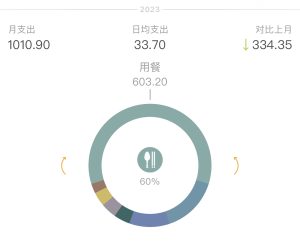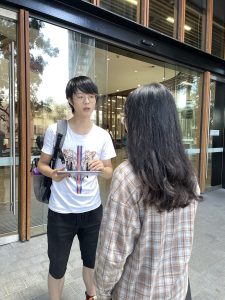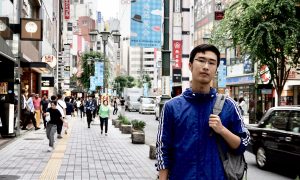
Here is a common issue for most international students. They are shocked about the amount of money they spend when they are not even noticed in the past month. Do you also have this issue as an international student? Do you also worry about this issue? Let us find the answer from this article!
‘There were 448,274 international students on student visas YTD January 2023, this is 20% more compared to January 2022.’ After the lock down finished, more and more international students came to Australia for higher-level education.
The issue is most of them have not ever experienced being a totally independent person. Furthermore, COVID-19, climate change, and global supply chain issues have each driven up the cost of living in Australia.
For international students, the increase of living cost is reflected in housing costs, groceries, and transportation fees. According to the data from the Department of Home Affairs, back in 2019, the cost of living in Australia for a single person is on average 1800$ per month. Meanwhile, the average amount has increased up to around 3800$ per month for a single person.
The international students who came to Australia last year would not experience the price increasing year by year, but every international student I have questioned about ‘how is your Australian life?’ They started complaining about the rental price.
The truth is, there is a part of spending international students usually do not notice that causes them to get pressure on living costs.
It is the money they spend on groceries, food, and monthly utility bills they paid. These are usually not big numbers compared to a rent bill, but small things can add up. Here is a pie chart provided by my first interviewee about her spending in April.(see Figure.1) The cost of food is 60% of her total spending which is about 600$ per month.

Fig.1 The chart provided by Xiahai. The chart about her monlth spending in Apirl.
The first interviewee I chat with is Xiahai, who lives alone in Australia, and she just came to Australia last year to complete her master degree in the University of Sydney. When she came alone, she had no idea whatsoever about how to save money from her life. ‘I am a girl who likes to be industrious and thrifty in managing the household. Seeing myself wasting money does not feel good.’ As she said in the interview.
She loves cooking and she cooks food for herself. Cooking at home saves her a lot of money and that makes sure she has good quality food to eat. ‘The good quality food maintains a good quality of study.’ She said that very proud.

Fig.2 Filmed by my friend using my phone. The picture of me interviewing Xiahai in front of the Business Building.
‘But things get worse when it is exam time,’ she said, ‘I am too busy to think about what to cook for dinner. I would rather buy some food to eat. But you know, eating out is expensive but leaves me no choice.’
The way she said she is going to reduce the cost of living is to reduce it to two meals per day, which is not healthy at all.
People are under pressure, but clearly this is not a good way to solve this issue. ‘Overall, learning how to cook is important, just some basic cooking skill is enough. Cooking at home will save a lot of money, but we need to find the balance between saving money and staying healthy.’ This is the tip she shows to me.
Moving to the next interview, I invite Charles who has ample life experience in Australia. He lived in Melbourne for two years from 2020 and then moved to Sydney in 2022. He has lived in Australia for about 6 years. ‘I am getting used to the slow living style in Melbourne, Sydney is busier compared to Melbourne.’ Then I asked him which city you like the most. He replied, ‘I would like to stay in Melbourne if I can because everything there is so cheap, but the education quality is not so good which makes me want to study at The University of Sydney.’

Fig.3 Provided by Charles. The picture is of him walking in the street.
As he came to Sydney before the lock down finished, his rental price is not that high, so he said he is satisfied with it right now. He is living with her girlfriend and both of them have already got a job. So, for this couple, they do not have any pressure on monthly utility bills as they share the bill together.
The most pressure of living cost comes from food and groceries. In recent years, he can feel the inflation. ‘The food resources are so reliant on inputs for Australia.’ He complained, ‘I used to be able to enjoy a big meal for 20$, but right now in Sydney this is the basic price of a meal.’
‘Choice to live in a suburb is a better choice. Although most international students are used to city life, living in the suburbs has a quieter environment and the rental is much lower.’ Not only that, ‘I used to live in the city, and the shops in the city definitely have higher prices for everything compared to a local grocery store in the suburbs.’
Charles brings this question to the next level; he is talking about the living style, which is the pain point of view that causes this issue. International students come from all over the world and they all have their own lifestyle but for the higher education opportunities, they decide to come to Australia. This is not only about the increasing price, like Xiahai, she decides to sacrifice her meal to save money, it is her change, and this is the choice she made. We are all allowed to choose how to live our lives, as he said, if you would like to have an unforgettable college life, enjoy these two years! If you want to save some money, I hope these tips help you!



Be the first to comment